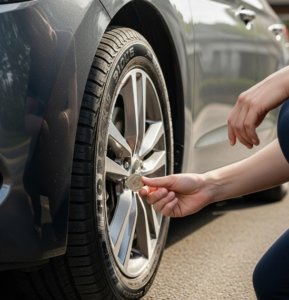Buying a used car can feel like a high-stakes gamble. There’s a lot of fear of the unknown—what if you buy a lemon? What if the seller is hiding a major problem? I’ve been there myself, and I can tell you that the right knowledge is the best tool you can have. The Hyundai Elantra, with its excellent reputation for fuel economy and reliability, is a fantastic choice for a used car. But as with any pre-owned vehicle, you need to know exactly what you’re looking at.
This used Hyundai Elantra buying guide is your roadmap. We’ll go beyond the surface and give you a powerful, step-by-step checklist to follow. From initial research to the final handshake, we’ll cover what to look for and, more importantly, what to look out for. By the end of this guide, you’ll be ready to buy with confidence, knowing you’ve done your homework.
Step 1: Researching the Best Hyundai Elantra Model Years
Not all Elantras are created equal. Different model years can have varying features, reliability, and common issues. Taking the time to pinpoint the most dependable models can save you a world of headaches and money down the road.
Best Year Hyundai Elantra Used:
- 2011-2016 (Fifth Generation): These models are a sweet spot for many buyers. They feature a sleek “Fluidic Sculpture” design and solid reliability. While some earlier models may have engine-related recalls, a well-maintained version from this era is a great value.
- 2017-2020 (Sixth Generation): This generation brought updated styling and new safety features like Apple CarPlay® and Android Auto™. They are often praised for a comfortable ride and modern tech, making them a popular choice.
- 2021-Present (Seventh Generation): The most recent models offer a bold, futuristic look and advanced driver-assistance features. If your budget allows, these newer models provide a near-new experience with the benefit of a lower used Hyundai Elantra price.
What to Avoid: While the Elantra is generally reliable, some model years have had more reported issues. For instance, some 2013 and 2014 models have had complaints regarding engine issues, including ticking noises and occasional stalling. It’s not a deal-breaker, but it’s a good reason to be extra diligent with your inspection and vehicle history report.
Step 2: The Pre-Purchase Checklist: Physical Inspection
Once you’ve found a promising Elantra, it’s time for a thorough inspection. This is where you become the detective. Don’t be afraid to take your time and be meticulous—it’s your money on the line.
Exterior Check:
- Walk around the car: Look for mismatched paint, uneven gaps between body panels, or any signs of previous bodywork. These could indicate a past accident.
- Check for Hyundai Elantra common rust spots: Pay close attention to the wheel wells, rocker panels (the area below the doors), and the undercarriage, especially if the car has spent time in an area that uses road salt. Surface rust is one thing; bubbling or holes in the metal are a serious red flag.
- Tires: Check the tread depth and wear pattern on all four tires. Uneven tire wear can be a sign of poor alignment or more serious suspension issues.
Under the Hood:
- Engine: The engine should be clean, but not suspiciously so. A spotless engine might be a sign that the seller is trying to hide leaks. Look for any signs of oil or fluid leaks around the engine block and hoses.
- Fluids: Check the engine oil, transmission fluid (if applicable), coolant, and brake fluid. All should be at the correct level and should not look dark, cloudy, or smell burnt.
Interior & Electronics:
- Test all electronics: Make sure the windows, locks, radio, air conditioning, and lights are all working correctly.
- Warning lights: Turn the key to the “on” position without starting the engine. All warning lights should illuminate and then turn off after you start the car. If a light stays on, there’s a problem.
Step 3: The Paperwork & History Check
Don’t let the excitement of a new car distract you from the most critical step of all: the paperwork. This is your chance to verify everything the seller has told you and uncover any hidden truths.
- Vehicle History Report: Always get a CARFAX or AutoCheck report. This report is a crucial window into the car’s past, revealing information about past accidents, service records, and title issues like flood damage or salvage titles.
- Maintenance Records: Ask the owner for service records. A diligent owner who has followed the Hyundai Elantra maintenance schedule is a great sign. It shows they’ve cared for the car and you won’t have to guess what’s been done.
- Warranty Check: If the car is new enough, you may be able to benefit from a Hyundai Elantra warranty transfer. The original 10-year/100,000-mile powertrain warranty for the first owner becomes a 5-year/60,000-mile warranty for the second owner. You can check the eligibility by providing the VIN to a Hyundai dealership.
Step 4: The Test Drive & Mechanic’s Inspection
This is your final chance to make sure the car feels and sounds right. Take it on a route that includes city streets, highways, and some turns.
- Listen for sounds: Pay attention to any unusual noises—knocks from the engine, squealing from the brakes, or clunking from the suspension.
- Feel the ride: The car should accelerate smoothly, shift gears without hesitation, and brake without pulling to one side.
- Get a Pre-Purchase Inspection (PPI): This is the single most important step. Take the car to an independent mechanic you trust. They will put the car on a lift and perform a comprehensive inspection that will uncover issues you might miss. It’s a small investment that can save you thousands.
Final Checklist Before You Buy:
- Check the Vehicle History Report: Is the mileage consistent? Are there any major accidents?
- Physical Inspection: Are there any signs of rust or accident damage?
- Test Drive: Does the car drive smoothly and without any strange noises?
- Professional Inspection: Has a trusted mechanic given it a clean bill of health?
- Negotiate the Price: Research the used Hyundai Elantra price for similar models in your area to ensure you’re getting a fair deal.
- Finalize Paperwork: Ensure the title is clear and all documentation is in order before handing over any money.
By following this guide, you’re not just buying a car; you’re making a smart, informed decision that will provide you with a reliable ride for years to come.
Frequently Asked Questions: Used Hyundai Elantra
Q1: Is the Hyundai Elantra warranty transferable to a new owner?
Yes, in most cases, it is. The original owner’s 10-year/100,000-mile powertrain warranty is not transferable, but the second owner receives a limited 5-year/60,000-mile powertrain warranty from the original date of purchase. It’s always best to verify the specific details with a Hyundai dealership using the vehicle’s VIN.
Q2: What is the typical Hyundai Elantra maintenance schedule?
For most Elantra models, you should expect routine oil changes and tire rotations every 7,500 miles. Other services, like air filter replacements and fluid checks, are typically recommended at 15,000-mile intervals. Spark plugs and coolant may need attention around the 95,000 to 120,000-mile marks. Always refer to the owner’s manual for the most accurate and specific schedule for your model year.
Q3: What should I do if a vehicle history report shows a minor accident?
A minor accident, such as a fender-bender, isn’t necessarily a deal-breaker. The key is to understand the extent of the damage. A good pre-purchase inspection by a mechanic can tell you if the repairs were done correctly and if there are any lasting issues. If the damage was significant, or if the repairs look shoddy, it’s likely best to walk away.
Hi, I’m [jeybee]. As a long-time resident of Seoul, I’m passionate about uncovering the authentic, everyday magic of Korea. This blog is my way of sharing my favorite spots, tips, and cultural insights with you, beyond the usual tourist traps.





